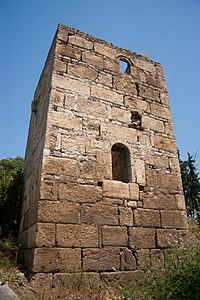Hellenistic fortifications

Hello there! Have you ever seen a castle or a fortress in a movie or a book? Well, back in ancient times, people also used to build strong and defensive structures called fortifications to protect their cities and territories from enemies.
During a time period called the Hellenistic era, which was between the death of Alexander the Great in 323 BC until the rise of the Roman Empire in 31 BC, people started building some pretty impressive fortifications. These fortifications were influenced by the Greeks, who valued defense and military strategy.
Now, when I say fortifications, I mean walls, towers, gates, and other defenses that would make it difficult for attackers to invade a city or a region. The Hellenistic people took fortifications to the next level by adding things like catapults, moats, and even underground tunnels for sneaky escapes!
The Hellenistic fortifications were designed to withstand attacks from all sides, not just from the front. They also incorporated natural obstacles like cliffs or rivers into their defensive systems. This made it even more difficult for enemies to invade and conquer their cities.
One of the most famous examples of Hellenistic fortifications is the walls of the ancient city of Rhodes in Greece. These walls were constructed between 305 and 290 BC and were made of limestone blocks that weighed as much as 16 tons each! The walls were so strong that they successfully defended Rhodes against attacks from the powerful Macedonian king, Demetrius Poliorcetes.
In summary, Hellenistic fortifications were strong, impressive defensive structures built during a time period when cities and territories were constantly at risk of invasion. They incorporated unique features like underground tunnels and natural obstacles to create intricate systems of defense that were difficult to penetrate. It’s pretty fascinating stuff, don’t you think?
During a time period called the Hellenistic era, which was between the death of Alexander the Great in 323 BC until the rise of the Roman Empire in 31 BC, people started building some pretty impressive fortifications. These fortifications were influenced by the Greeks, who valued defense and military strategy.
Now, when I say fortifications, I mean walls, towers, gates, and other defenses that would make it difficult for attackers to invade a city or a region. The Hellenistic people took fortifications to the next level by adding things like catapults, moats, and even underground tunnels for sneaky escapes!
The Hellenistic fortifications were designed to withstand attacks from all sides, not just from the front. They also incorporated natural obstacles like cliffs or rivers into their defensive systems. This made it even more difficult for enemies to invade and conquer their cities.
One of the most famous examples of Hellenistic fortifications is the walls of the ancient city of Rhodes in Greece. These walls were constructed between 305 and 290 BC and were made of limestone blocks that weighed as much as 16 tons each! The walls were so strong that they successfully defended Rhodes against attacks from the powerful Macedonian king, Demetrius Poliorcetes.
In summary, Hellenistic fortifications were strong, impressive defensive structures built during a time period when cities and territories were constantly at risk of invasion. They incorporated unique features like underground tunnels and natural obstacles to create intricate systems of defense that were difficult to penetrate. It’s pretty fascinating stuff, don’t you think?
Related topics others have asked about:
